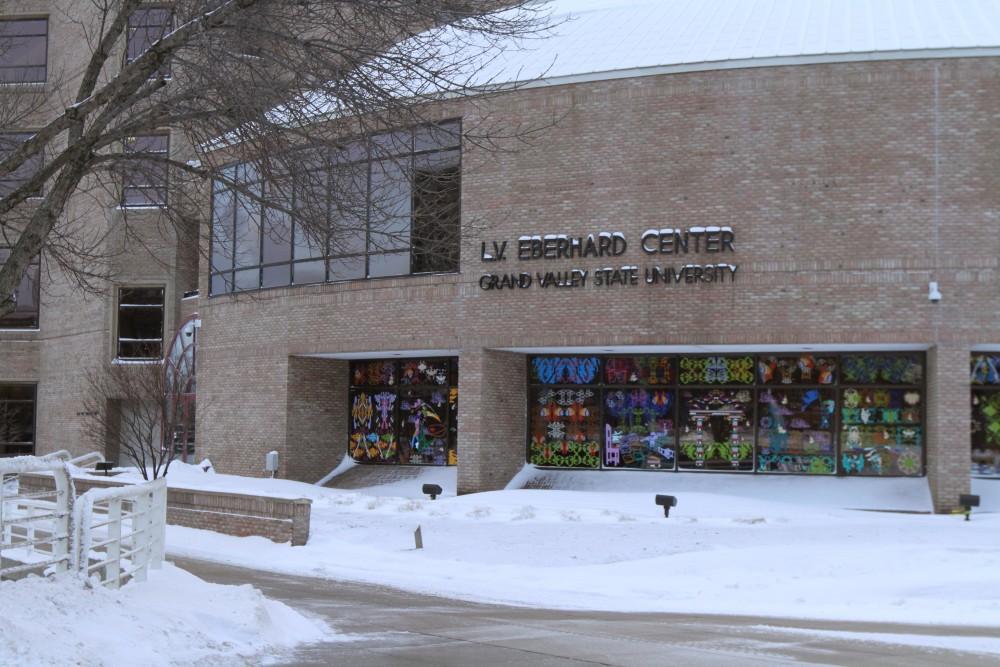GVSU joins Grand Rapids in challenge to make the city greener

With all of the recent snow, Grand Valley’s Campuses have been covered in snow and have to be regularly plowed. Photo taken on Jan 12 in downtown Grand Rapids.
Jan 14, 2016
The city of Grand Rapids is constantly striving to become sustainable, environmentally friendly and energy efficient, and these values are what led the city to join the 2030 District initiative.
In order to slow and eventually reverse greenhouse gas (GHG) emissions and cause positive climate changes, Architecture 2030 issued the 2030 Challenge, which sets several goals that the 12 currently involved districts are aiming to meet.
In order to ensure success meeting Grand Rapids’ emissions goals, GVSU has made some energy saving changes to its Pew Campus and DeVos Center.
According to Terry Pahl, the facilities engineer at GVSU, these changes included replacing lighting with LED lights, adjusting temperature set points, and performing steam system inspections.
The goals of the initiative include for all new buildings, developments, and major renovations in a district be designed to meet a performance standard of 70 percent below the country’s average for that building type.
The second goal is for the fossil fuel reduction standard for all new buildings, developments, and major renovations to increase to 80 percent reduction in 2020, 90 percent in 2025, and to be carbon-neutral by 2030, or rather for the buildings to use no fossil fuel GHG emitting energy to operate.
The final goal is that all existing buildings within developments, neighborhoods, towns, cities or regions must implement a 20 percent reduction standard below the regional average for fossil fuel operating energy consumption, carbon dioxide emissions from transportation, and water consumption.
After this, the reduction standard for existing buildings will increase to 35 percent in 2025 and to 50 percent in 2030.
Grand Rapids became involved with the 2030 District initiative in December, with 39 founding members heading the initiative for the city.
The founders of the Grand Rapids 2030 District included 20 building owners who represent 61 buildings and 9,975,420 square feet of downtown real estate.
According to Cheri Holman, executive director at U.S. Green Building Council of West Michigan, Michigan Battle of the Buildings, and Grand Rapids 2030 District, the city of Grand Rapids decided to join the challenge based on interest from the city itself and from large property owners.
“I think several people found out about it at the same time and decided it would be a good fit for Grand Rapids,” Holman said.
With the energy efficient practices being implemented at GVSU, the university will reduce the cost of utilities.
Pahl said that GVSU is saving approximately $2.2 million annually due to almost 300 energy conservation and efficiency projects that have been put in place.
This reduction in utility costs will allow for the university funds to be diverted to other programs and future projects.
“All of those efforts help GVSU to be financially sound,” Pahl said. “It will provide a more sustainable culture and an affordable option for students.”
Despite the predicted positive effects of the energy project, there are some foreseeable challenges.
Pahl said that along with what has already been done, the challenges will be in funding and methods needed to reach additional milestones.
However, the 2030 District initiative will continue to develop and implement creative projects and practices to reach the common goal of energy efficiency.
For more information of 2030 District or the involved districts go to www.2030districts.org.

























